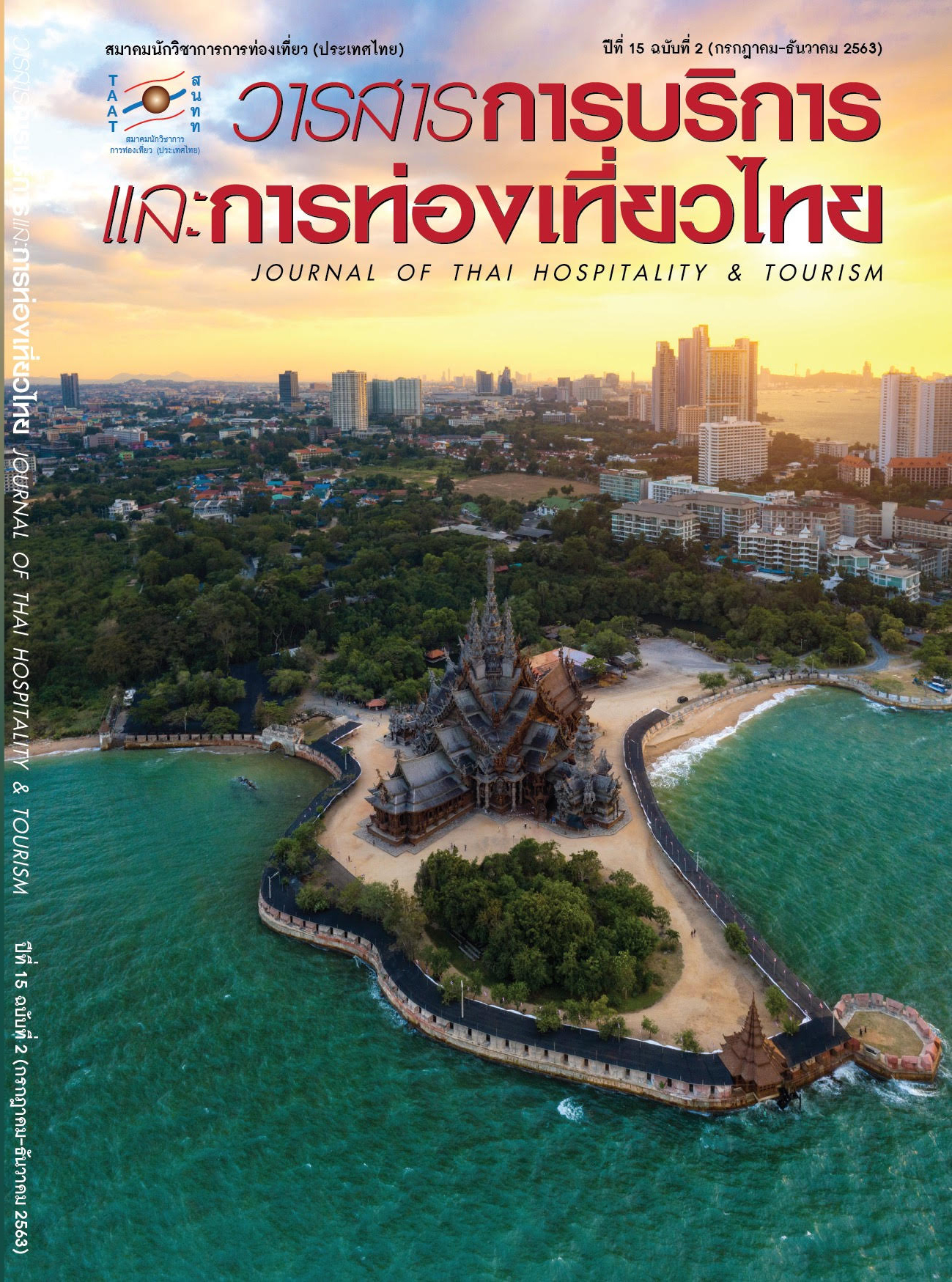การพัฒนาหลักเกณฑ์ข้อกำหนดการจัดการท่องเที่ยวเชิงนิเวศบนฐานความหลากหลายทางชีวภาพและการอนุรักษ์ทรัพยากรชีวภาพสำหรับวิสาหกิจชุมชนเพื่อสังคม
Main Article Content
บทคัดย่อ
การวิจัยมีวัตถุประสงค์เพื่อ (1) วิเคราะห์องค์ประกอบร่วมของการท่องเที่ยวเชิงนิเวศบนฐานความหลากหลายทางชีวภาพและการอนุรักษ์ทรัพยากรชีวภาพสำหรับวิสาหกิจชุมชนเพื่อสังคม และ (2) พัฒนาหลักเกณฑ์ข้อกำหนดการจัดการท่องเที่ยวเชิงนิเวศบนฐานความหลากหลายทางชีวภาพและการอนุรักษ์ทรัพยากรชีวภาพสำหรับวิสาหกิจชุมชนเพื่อสังคม การวิจัยนี้ใช้วิธีการวิจัยแบบผสม โดยเป็นการศึกษาเอกสาร การศึกษาพหุกรณี และการจัดประชุมเชิงปฏิบัติการ ผลการวิจัยพบว่าหลักเกณฑ์ข้อกำหนดการจัดการท่องเที่ยวเชิงนิเวศบนฐานความหลากหลายทางชีวภาพและการอนุรักษ์ทรัพยากรชีวภาพสำหรับวิสาหกิจชุมชนเพื่อสังคม มีทั้งหมด 6 องค์ประกอบ คือ (1) ด้านแหล่งท่องเที่ยวเชิงนิเวศที่เน้นความหลากหลายทางชีวภาพที่เอื้อให้เกิดการใช้ประโยชน์ การเรียนรู้วิถีชีวิตและวัฒนธรรม (2) ด้านการดำเนินกิจกรรมการท่องเที่ยวต้องเป็นการรวมตัวของสมาชิกในชุมชนในรูปแบบวิสาหกิจชุมชนเพื่อสังคม (3) การบริหารจัดการท่องเที่ยวมีการจัดบริการและกิจกรรมที่ไม่กระทบสิ่งแวดล้อม (4) ด้านการเรียนรู้และสร้างจิตสำนึกในคุณประโยชน์และการอนุรักษ์ทรัพยากรชีวภาพ (5) ด้านกระบวนการมีส่วนร่วมในการจัดการวิสาหกิจชุมชนเพื่อสังคม การใช้ประโยชน์และการอนุรักษ์ทรัพยากรชีวภาพ และ (6) ด้านการจัดสรรผลประโยชน์สู่ชุมชนและการอนุรักษ์ทรัพยากรชีวภาพอย่างยั่งยืน
Article Details
เอกสารอ้างอิง
Ceballos–Lascurain, H. (1991). Tourism, Ecotourism and Protected Areas. Gland, Switzerland: IUCN.
Chalermchai Panyadee. (2014). Project Development and Promote Community Tourism Area Follow Tourism Business and Guide Act 2008. Bangkok: Department of Tourism.
Convention on Biological Diversity and United Nations Environment Programme. (2007). Managing Tourism and Biodiversity. Canada: Secretariat of the Convention on Biological Diversity.
Convention on Biological Diversity and United Nations Environment Programme. (2002). Biological Diversity and Tourism: Development of Guidelines for Sustainable Tourism in Vulnerable Ecosystems. Canada: Secretariat of the Convention on Biological Diversity.
Habibullah, M. S., Din, B. H., Chong, C. H. & Radam, A. (2015). Tourism and Biodiversity Loss: Implications for Business Sustainability. Procedia Economics and Finance, 35, 166–172.
IUCN European Union Representative Office. (2010). Tourism Sector and Biodiversity Conservation Best Practice Benchmarking. Belgium: European Union Representative Office.
Seree Pongpit. (2005).From Master Plan Concept to Community Enterprise Development. Bangkok: Chaloern Wit Printing.
Thai Social Enterprise Office. (2010). Master Plan to Reinforce the Social Enterprise 2010–2014. Bangkok: Thai Social Enterprise Office.
United Nation World Tourism Organization. (2010). Tourism and Biodiversity Achieving Common Goals Towards Sustainability. Spain: World Tourism Organization.
United Nations Environment Programme and Convention on Biological Diversity. (2015). Tourism Supporting Biodiversity. Canada: Secretariat of the Convention on Biological Diversity.
Yos Santasombat. (1999). Biodiversity and Local Wisdom for Sustainable Development. Center for Biodiversity and Local Wisdom for Sustainable Development, Faculty of Social Science, Chiang Mai University.


